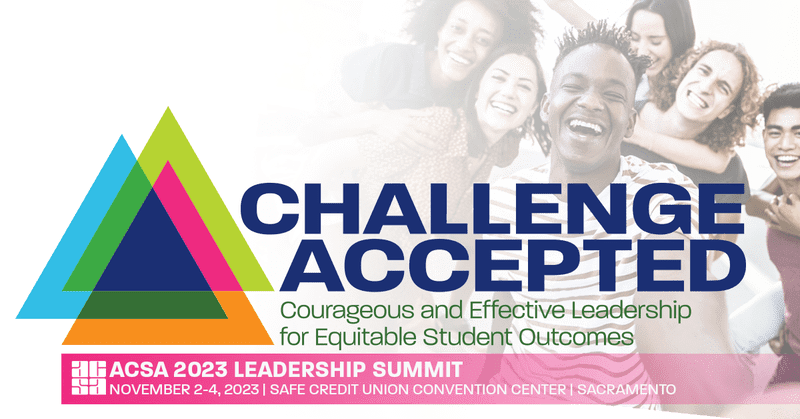Marking LGBTQ+ History Month in 2023
New LGBTQ+ legislation and resources educators should know about
October 16, 2023
The following article was written by Michael Tapia.
Among a number of important events recognized annually in the month of October, LGBTQ+ History Month provides a great opportunity for educators to provide mirrors and windows for our diverse student bodies.
Created in 1994 by Missouri high school teacher Rodney Wilson, LGBTQ+ History Month recognizes important moments in the history of lesbian, gay, bisexual and transgender people and their accomplishments and contributions to society. Included during this month-long recognition, National Coming Out Day (Oct. 11) not only encourages those who are LGBTQ+ to acknowledge their identities publicly but also celebrates the anniversary of the first National March on Washington for Lesbian and Gay Rights that first took place in October of 1987.
This year, LGBTQ+ History Month takes on added significance considering the current political climate along with some very important legislation that Gov. Gavin Newsom recently signed into law.
Before getting into the particulars of politics and new laws, please consider this: LGBTQ+ transcends all racial, ethnic, language, ability/disability, religious and socioeconomic groups. Beyond students, school/district staff along with our student’s parents/guardians and families are being referenced here. The Williams Institute at UCLA estimates that roughly 10 percent of middle and high school students in California identify as LGBTQ (2019) and that nearly 50 percent of K-12 LGBT employees who work or have worked in the K-12 public school system have not divulged their LGBT identity at work due to fear of discrimination (2021).
As administrators, one of our responsibilities is to ensure that our campuses are welcoming to all students, families and staff, and that our curriculum not only reflects our students’ intersecting identities but also provides insights and understanding of other cultures to those unfamiliar with them. As educators, we also want all of our students to be engaged and successful at school.
However, if the school climate is not one that provides feelings of inclusivity and acceptance, opportunities for learning and achievement may be diminished for our marginalized students. It is also equally important for us to offer inclusive environments for our LGBTQ+ staff, but based on the data mentioned previously, improvement is needed.
You are probably familiar with many of the laws that have been in place for a number of years to support students, including LGBTQ+. For example, SB 48, better known as the FAIR Education Act (effective in 2012), requires that among many diverse groups of people, LGBTQ+ Americans be included in K-12 history/social science instruction; the CDE released a new history/social science framework in 2016 to provide guidance in the implementation of this law.
In light of the recent pushback from a vocal minority against LGBTQ+ inclusivity across the country and in several areas of California, it is even more important to not only be aware of California policies and laws that have already been in place for some time but to learn about some of the LGBTQ+ or LGBTQ+-inclusive legislation signed into law very recently by Gov. Newsom:
AB 5 (Chavez-Zbur) – Sets implementation timelines for required LGBTQ+ cultural competency training by public school teachers and staff.
SB 857 (Laird) – Will establish an advisory task force to identify LGBTQ+ pupil needs statewide and assist in implementing supportive initiatives.
AB 1078 (Jackson) – Bans “book bans” in schools, prohibits censorship of instructional materials, and strengthens California law requiring schools to provide all students access to textbooks that teach about California’s diverse communities.
To assist you as you support and encourage student and staff learning opportunities related to LGBTQ+ during October and throughout the school year, please consider reviewing and using the LGBTQ+ History Month and Pride Month Resource Guide posted on the ACSA Resource Hub. Some additional supplemental resources available include:
LGBTQ Educational Resources: Teaching LGBTQ History – Resources for California Educators, Students, and Families – Managed by the Our Family Coalition and ONE Archives Foundation on behalf of the Fair Education Act Implementation Coalition, this website offers a plethora of resources. lgbtqhistory.org/lgbtq-educational-resources
Teaching About LGBTQ+ World History (Educators 4 Social Change) – In addition to providing links to sites already mentioned, links to lessons from the Anti-Defamation League (ADL), understanding terminology, articles, books, informational sites, and additional resources are available on this website. educators4sc.org/teaching-about-lgbtq-world-history
Teaching and Learning LGBTQ+ History of the United States (ASHP/CML) – The American Social History Project website offers some important historical information related to LGBTQ+ over a broad timeline; sections include primary sources by time period (six periods), collections across time periods, and teaching activities and classroom resources. ashp.cuny.edu/teaching-and-learning-lgbtq-history-united-states
GBTHistoryMonth.com – This website provides one-page biographies of numerous LGBTQ+ icons from various fields and time frames; currently offers information about 496 of these icons. lgbthistorymonth.com
Michael Tapia is a retired school administrator from Ventura USD.





